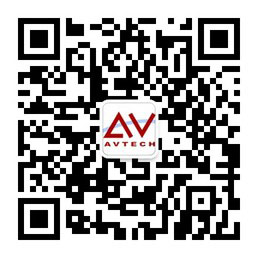有效管理需求
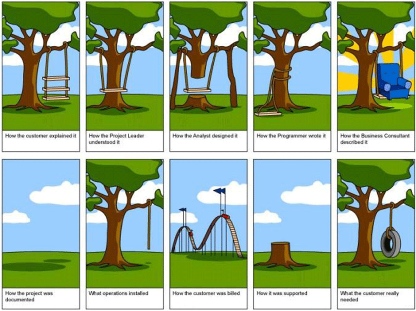
So, how does one effectively manage requirements? In this blog, we will explore four steps to answer this question.
To understand how we must manage requirements, we must first understand the definition of requirements management.
Requirements management focuses on two critical aspects:
1、Understanding the goals of the organization and its customers.
2、Transforming these goals into potential functions and constraints applicable to the development and evolution of products and services.
http://www.iibachina.com/thread-2460-1-1.html
Based on this definition, one can allude that we need “a systematic approach to eliciting, organizing and documenting the requirements of the system, and establishing and maintaining agreement between the customer and the project team on the changing of requirements of the system.” How can we achieve this?
To demonstrate, let’s look at Step 1, a simple high level process flow for requirements management:
To understand how we must manage requirements, we must first understand the definition of requirements management.
Requirements management focuses on two critical aspects:
1、Understanding the goals of the organization and its customers.
2、Transforming these goals into potential functions and constraints applicable to the development and evolution of products and services.
http://www.iibachina.com/thread-2460-1-1.html
Based on this definition, one can allude that we need “a systematic approach to eliciting, organizing and documenting the requirements of the system, and establishing and maintaining agreement between the customer and the project team on the changing of requirements of the system.” How can we achieve this?
To demonstrate, let’s look at Step 1, a simple high level process flow for requirements management:
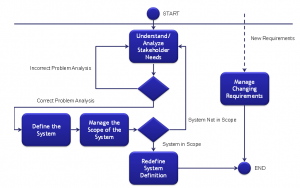
As you analyze this diagram, you will notice that it does not show what to do when capturing ambiguous requirements and, more importantly, how to convert them to unambiguous requirements.
An approach that Online Business Systems’ (OBS) Alberta Region Business Analysis practice is attempting to distill amongst its Business Analysts is the OBS Overarching Model (OOM). In Step 2, we embody this model in our psyche every time we engage stakeholders. If we constantly have this model in mind when collecting requirements, it will help to convert many ambiguous requirements to unambiguous requirements.
An approach that Online Business Systems’ (OBS) Alberta Region Business Analysis practice is attempting to distill amongst its Business Analysts is the OBS Overarching Model (OOM). In Step 2, we embody this model in our psyche every time we engage stakeholders. If we constantly have this model in mind when collecting requirements, it will help to convert many ambiguous requirements to unambiguous requirements.
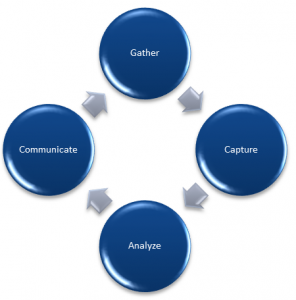
Once we have this mindset, we can then dive into the tools and techniques needed to collect the appropriate requirements. PMBOK has an effective method to collecting requirements. It has even dedicated a full process for this. Step 3 illustrates how we can achieve this. Of course, PMBOK assumes that this is done in a project setting. Since many of the OBS client engagements involve working on a project with a definite budget, it is safe to assume that these techniques can also be applied here:
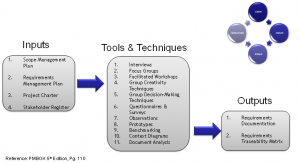
When using the Collect Requirements process, keep the process flow of Step 4 in mind when communicating with different stakeholders. This will ensure the right information is communicated at the right time to the right stakeholder.
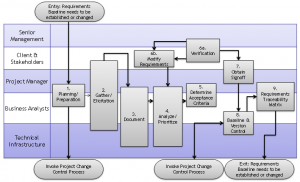
Hopefully, these steps will help you to manage your requirements a little better. To summarize, one can manage requirements effectively by following these four steps:
1、Understand Requirement Management Process Flow
2、Adopt the OBS Overarching Model
3、Use PMBOK’s Collect Requirements Tools & Techniques
4、Communicate to stakeholders
As a result, managing requirements can be a breeze.
1、Understand Requirement Management Process Flow
2、Adopt the OBS Overarching Model
3、Use PMBOK’s Collect Requirements Tools & Techniques
4、Communicate to stakeholders
As a result, managing requirements can be a breeze.
本文来自于艾威培训
转载请注明:https://www.avtechcn.cn/share/1348.html

